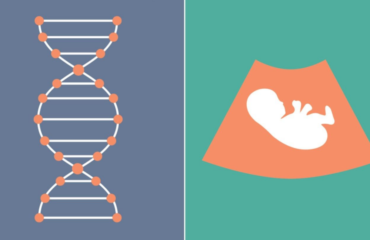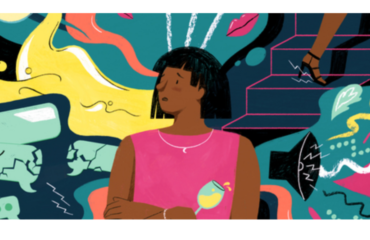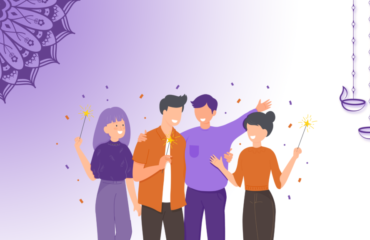
Mainstream Indian cinema has its fair share of disability portrayals. But have they been realistic—especially when such disabilities are invisible?
Cinema is considered to be a powerful medium to reflect and influence what society thinks and believes. Between the real and reel life, the silver screen has educated the masses—fostering changed practices and attitudes while keeping them entertained. Given the reach of the Bollywood industry in India (and globally), it has been particularly effective in changing people’s perceptions and uprooting societal stereotypes. At the same time, however, it has promoted wrong and dangerous images of less-known topics, such as disability and neurodiversity.
Before we move into the nitty-gritty, I want to leave you, readers, with a question:
Apart from charity advertising, when did you last see a picture or video representing disability?
Empathetic Representation in Bollywood
While most Indian movies have misconstrued disability into comic relief or insensitive tropes, several have attempted to portray it more empathetically.
Koi Mil Gaya (2003)
While never specified, many suggest that Hrithik plays the role of someone with a congenital developmental disability. It is not the best portrayal by any means, but the film was ahead of its time in introducing this topic to the audience. It earned Rs 1.03bn at the box office, thus earning the title of a blockbuster with highly positive critical reviews. However, it is to note that the film falls prey to the common trope of “happy-ending with cure” and ultimately fails to do justice.
Representation of people with disabilities in different fields is crucial. STEM and sports face underrepresentation of individuals with differences. It is important to streamline access to facilities, programs, and equipment; and acceptance by educators, employers and co-workers. Movies can have a positive effect on all of these factors and help to open doors to new areas of study and employment. By causing shifts in social perceptions, they positively influence the participation and inclusion in opportunities—Iqbal (2005) is one such example.
Iqbal (2005)
A coming-of-age sports drama about Iqbal, a talented cricketer who’s hard of hearing. His condition makes it difficult for him to communicate, yet he pursues his dreams of playing for the Indian National Team. The film received the National Film Award for Best Film on Other Social Issues.
The New Era of Visibility
Often, those with learning differences are mocked and looked down upon. Peers are called “slow” and other slurs if they do not fit the ‘norm’. One movie that brought about an attitudinal shift in this regard was Taare Zameen Paar (2007).
Considered a cult classic, it portrays the journey of a young boy diagnosed with dyslexia. While initially ridiculed, his family recognizes his disability and accepts the way he is in the end. The movie did so well at the box office and left such an impact on the audience, that several fashion shows began fundraising for disability organizations. The CBSE issued a circular allowing students with disabilities extra time during examinations, following the movie (Mahaseth, 2019). This milestone judgment helped thousands of children across the country.
Not only in classrooms, neurodiverse individuals often face family conflicts and bear the brunt of misunderstandings. My Name is Khan (2010) beautifully portrays the same. The protagonist, Rizwan Khan, a Muslim immigrant with Apserger’s Syndrome rises against prejudice and racism. The movie raised Rs. 2.05bn at the box office.
How do those with different disabilities interact? Barfi (2012) is the story of a deaf and mute man and his childhood friend, a girl with autism. Directed by Anurag Basu, Priyanka Chopra plays Jhilmil—the autistic adult with slurred speech—who has difficulties navigating everyday life. It makes strong statements about human nature, as we discussed here. The movie raised Rs. 1.74bn at the box office and was a mega success.
Social Integration & Exposure
Neurodiverse adults actively participate in dating, romance, and intimate relationships, embracing a wide array of identities. Despite this, movies largely misrepresent their feelings, desires, and thoughts. Margarita with a Straw (2019) is a personal favourite, where Kalki Koechlin plays an Indian teenager with cerebral palsy relocating to the US for a semester abroad. It addresses complex issues such as love and sexuality for people with disabilities, and is rightfully described as “wonderfully liberating” and “an achievement [for Indian cinema]”. Baradwaj Rangan, film critic at The Hindu, found Bose’s treatment of disability and normalcy refreshing— “There’s not a trace of stereotype, not a shred of self-pity”. The film does justice to neurodiversity and romance, which often occupy a space of discomfort in mainstream media conversation.
In the past, neurodiverse conditions were showcased in orthodox light in motion pictures. However, the recent trend in Hindi films, as noted by Prasad et. al, goes beyond stereotypes. Like in Barfi! filmmakers often exaggerate neurodiverse conditions in terms of the capabilities of the protagonist. This is often to increase engagement, add a shock factor and/or romanticism, and is far from reality. Add a few comic interludes, and you have the recipe for a perfect disaster—courtesy of our B’town filmmakers. Nevertheless, in recent years, Margarita with a Straw (2014), Hichki (2018), etc., have attempted to challenge the norm, with strong female leads.
Final Note
Films that have neurodiverse characters come as good news, yet casual ableism prevails. Lack of screen space allotted to neurodiverse characters, or lack of independent roles for disabled (and not as purely dependent characters). Moreover, stereotypical outlooks plague a stark majority of movies that pass these criteria—many of those representations are accurate, many are inaccurate, and some are even offensive. Thus, neurodiverse humans, bodies, thoughts, desires and rights remain underrepresented, as supported by a Stanford study that ranks Indian films high in offensive caricature and misrepresentation.
Yet, as more and more new-age films on these topics arise, conversations are less shrouded and made easier. The ways in which individuals and groups are portrayed in popular media has profound effect on how they are viewed by society at large. As we continue to spread awareness and understanding about the realities of neurodiversity(ies), we can look to accurate potrayals in the media, and destigmatize such conditions.
“Stop, see us, listen to us and let us tell our stories. If we aren’t allowed to contribute, movies and shows will continue to make caricatures and stereotype-laden imageries out of us.”
Aatharva Sethumathavan




You must be logged in to post a comment.